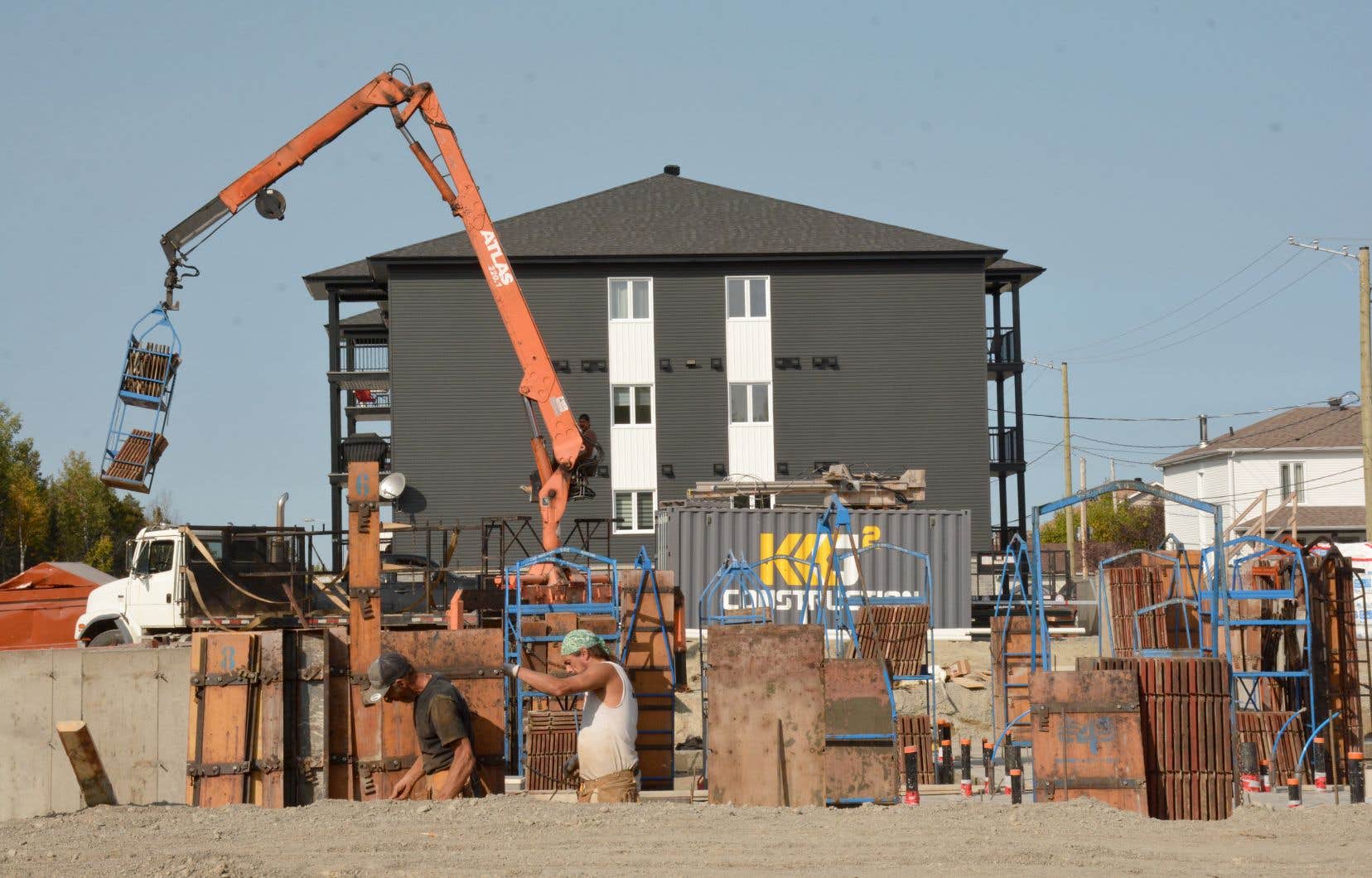Although it is largely built on rocky capes or wetlands, Abitibi-Témiscamingue displays one of the highest levels of investment in residential construction in Quebec. To get there, entrepreneurs are not waiting, and the public authorities are multiplying their tricks. Overview.
In her office at Val-d’Or city hall, the mayor removes a sheet from her desk, the content of which she does not reveal. There is a list of all construction projects in his municipality. “We’ve never seen that,” says Céline Brindamour, who has been in municipal politics for more than 20 years.
After almost a decade of latency, residential buildings are emerging in Abitibi-Témiscamingue. In Rouyn-Noranda, the construction of the “Terraces Ossisko” co-ownership apartments is in “phase 7”. In Val-d’Or, a building of 100 housing units is emerging where a forest grew last year. In these municipalities that have no shortage of space, rows of multi-unit housing are being erected in newly opened streets.
We have one of the lowest vacancy rates in Quebec, but starting next year, we should go back up
“Yes, it’s luxurious, but it will free up homes for families,” explains Céline Brindamour. “We have one of the lowest vacancy rates in Quebec, but starting next year, we should go back up. »
However, nothing is easy in this northern region. The soil is capricious, and construction costs are higher here than elsewhere in Quebec, by a margin of 20% to 35%, depending on who you ask. Despite these obstacles to investment, spending on new construction increased by 48.7% last year compared to 2021. Abitibi thus ranks second among Quebec regions with the greatest progress in terms of amounts invested in housing, behind the North Shore.
This progression can be explained, among other things, because everyone is doing their part.
Last year, Val-d’Or adopted a “tax on land not served” by water and sewer networks in order to force the hand of land holders. “It’s not a big tax. It doesn’t make a huge difference, but it allows us to talk about it,” explains M.me Brindamour.
“Anti-speculation” measures are also being pushed behind the backs of land holders. These squares of land sold by the Val-d’Or Industrial Development Corporation cannot be resold for a profit. Any resold land that has not been invested by developers must be resold to the corporation at the same price.
“City camps”
You have to believe that all means are good to increase your rental supply. In Rouyn-Noranda, a mining company deployed a “city camp” at the beginning of the year. Up to 64 workers can stay in these construction trailers installed on the city limits, while these barracks are generally located placed in the forest or near mines, or in remote corners of this resource region.
The University of Quebec in Abitibi-Témiscamingue (UQAT) also offers tips. At the beginning of the year, she tried to buy a motel in Témiscamingue to accommodate a few dozen students.
Details derailed the project, but the administration is undeterred. Managing housing has never been “ core business » from UQAT, but turning our back on the problem is not possible. “The objective, in the long term, is to acquire a real estate portfolio,” says the rector, Vincent Rousson.
Two residences have already been found in Rouyn-Noranda and one in Val-d’Or. “We are also working on a file in Rouyn-Noranda to build two additional residences,” says the rector.
He estimates that, in the next five to ten years, the need for student accommodation will increase from 800 to 1,000. The University would also like to double the number of foreign students within its walls, currently estimated at around 500 people. “We tell our teams “Promote, but don’t overdo it” because we currently don’t have accommodation to accommodate them,” adds the rector.
The buffer zone, not for tomorrow
It remains that the demolition of 82 buildings near the Horne Foundry, and therefore the removal of 200 housing units in the capital of Abitibi, risks thwarting the recent progress made in housing.
This expropriation process is still only in the needs assessment phase. And since the construction of new buildings will precede the destruction of the buffer zone, these expropriations are not for tomorrow, says the person responsible for the file in Rouyn-Noranda, Samuelle Ramsay-Houle. “It’s an opportunity to look for more housing,” she said, emphasizing that it is Quebec which assumes most of the costs of this process. “Generally, people want to stay in the city. […] We are going to densify the city. »
Already this summer, more than a hundred new types of housing have seen the light of day in the copper capital: buildings with 4, 6 or 16 homes.
Facing a short-term rental problem fueled by the fly-in fly-outthe City also says it is “considering” whether to regulate Airbnb this fall, because it is a burden on the rental market.
And what about social housing in all this? Most officials in the region point the finger at the government, which, according to the almost unanimous opinion of experts, should finance these constructions which go beyond the limits of the market.
This report is supported by the Local Journalism Initiative, funded by the Government of Canada.
